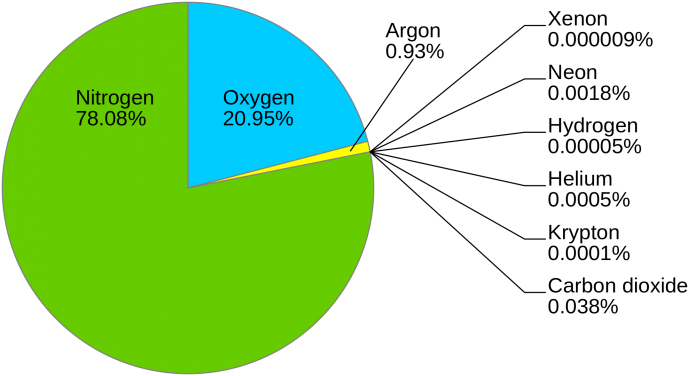Atmosphere: A detailed Review
A very important topic for the upcoming SSC CGL exam as well as other competitive exams too.

Atmospheric air mainly consists of –
Nitrogen → 78.03 %
Oxygen → 20.99 %
Argon → .94 %
Carbon Dioxide → .03 %
Nitrogen
- Major cause of atmospheric pressure, Force of wind & reflection of light
- Regulates combustion & avoids quick burning
- Dilutes oxygen and prevents rapid burning at the earth’s surface
- Nitrogen cannot be used directly from the air.
- The Nitrogen Cycle is nature’s way of supplying the needed nitrogen for living things
- Get fixed to soil & generates protein in plants (Major source of food)
Carbon Dioxide
- Heaviest gas in atmosphere, essential for growth of vegetation
- Transparent to incoming solar radiations but opaque to terrestrial radiations radiated from earth surface which keeps air near the ground warmer
- Responsible for global warming, as alarming increase in level of CO2 in past few years due to burning of fossil fuels
STRUCTURE OF ATMOSPHERE
The Atmosphere is divided into layers according to major changes in temperature. Gravity pushes the layers of air down on the earth’s surface.

Troposphere – 0 to 12 km – Contains 75% of the gases in the atmosphere. This is where you live and where weather occurs. As height increases, temperature decreases. The temperature drops about 6.5 degrees Celsius for every kilometre above the earth’s surface.
- Tropopause – located at the top of the troposhere. The temperature remains fairly constant here. This layer separates the troposphere from the stratosphere.
Stratosphere – 12 to 50 km – in the lower part of the stratosphere. The temperature remains fairly constant (-60 degrees Celsius). This layer contains the ozone layer. Ozone acts as a shield for in the earth’s surface. It absorbs ultraviolet radiation from the sun. This causes a temperature increase in the upper part of the layer.
Mesophere – 50 to 80 km – in the lower part of the stratosphere. The temperature drops in this layer to about -100 degrees Celsius. This is the coldest region of the atmosphere. This layer protects the earth from meteoroids. They burn up in this area.
Thermosphere – 80 km and up – The air is very thin. Thermosphere means “heat sphere”. The temperature is very high in this layer because ultraviolet radiation is turned into heat. Temperatures often reach 2000 degrees Celsius or more. This layer contains:
- Ionosphere – This is the lower part of the thermosphere. It extends from about 80 to 550 km. Gas particles absorb ultraviolet and X-ray radiation from the sun. The particles of gas become electrically charged (ions). Radio waves are bounced off the ions and reflect waves back to earth. This generally helps radio communication. However, solar flares can increase the number of ions and can interfere with the transmission of some radio waves.
- Exosphere – the upper part of the thermosphere. It extends from about 550 km for thousands of kilometers. Air is very thin here. This is the area where satellites orbit the earth.
























